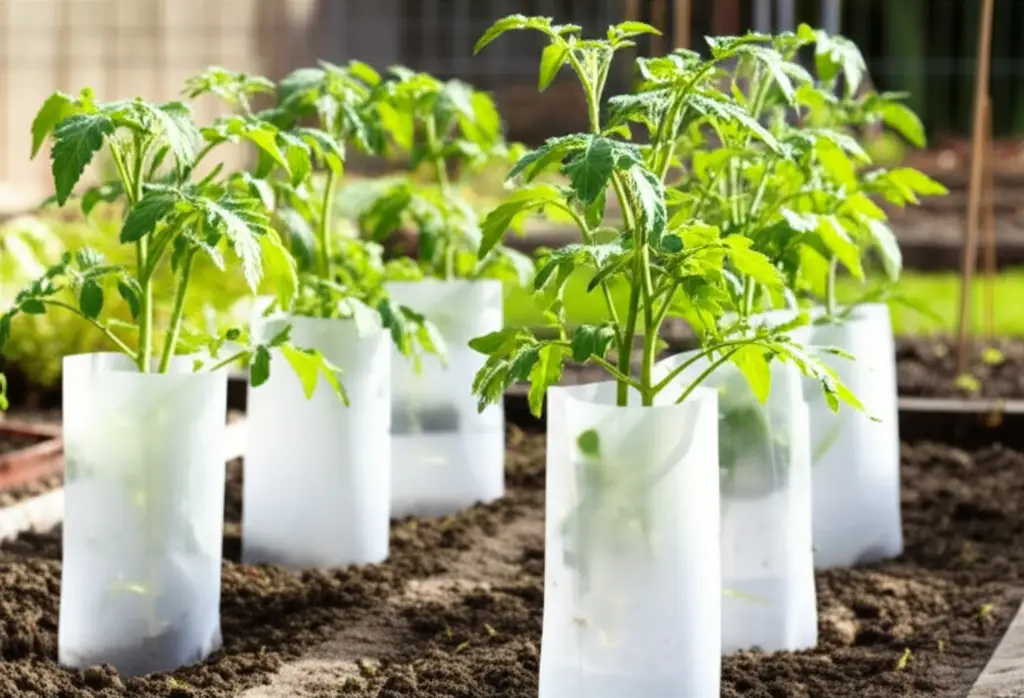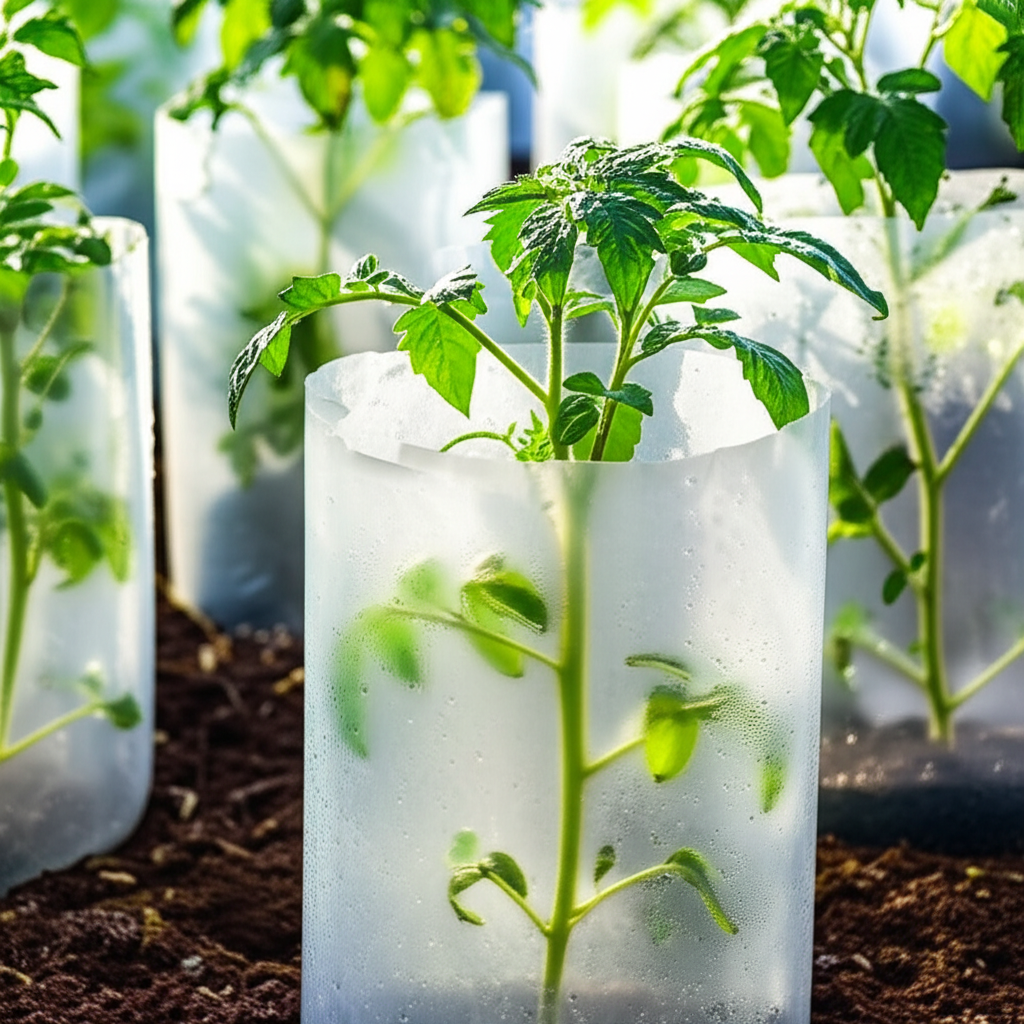Utilizing walls of water can significantly extend your tomato growing season, protect young plants from frost, and promote faster growth, leading to earlier and more abundant harvests.
Walls of water are ingenious devices that provide a protective microclimate for tomato plants, particularly in cooler climates or during early spring planting. They act as mini-greenhouses, trapping solar heat and warming the soil and surrounding air, creating ideal conditions for young tomato plants to flourish.

JUMP TO TOPIC
Understanding the Benefits of Walls of Water
Walls of water offer numerous advantages for tomato growers:
Frost Protection:
- Early Planting: Walls of water allow you to plant your tomatoes weeks earlier than you typically would, giving you a head start on the growing season. They shield tender seedlings from late spring frosts, which can damage or kill young plants.
- Microclimate Creation: These water-filled structures create a warm microclimate around each plant, effectively insulating them from cold temperatures and chilly winds. The water absorbs heat during the day and releases it slowly at night, keeping the plant’s immediate environment consistently warmer.
Enhanced Growth:
- Warmer Soil: The walls of water not only warm the air but also the soil, encouraging faster root development and overall plant growth. Warm soil is essential for nutrient uptake and healthy tomato plant development.
- Faster Maturity: By creating a consistently warm environment, these protective barriers speed up the growth cycle, leading to earlier fruit set and a more abundant harvest.
Disease Prevention:
- Reduced Soil Splash: Walls of water can help prevent soil-borne diseases by minimizing soil splashing onto the lower leaves of the plant. Fungal spores often reside in the soil and can be splashed onto the plant during watering or rain, leading to infection.
Setting up Your Walls of Water
Choosing the Right Time:
- Consider Your Climate: The ideal time to set up your walls of water depends on your local climate and the last expected frost date. Generally, you can install them 2-4 weeks before the last frost.
- Soil Temperature: Aim for a soil temperature of at least 50°F (10°C) before transplanting your seedlings. You can use a soil thermometer to check the temperature.
Assembling the Walls:
- Filling with Water: Fill the individual tubes with water according to the manufacturer’s instructions. This creates the thermal mass necessary for temperature regulation.
- Placement: Place the wall of water around each tomato plant, gently pressing it into the soil to create a good seal and prevent it from tipping over.
- Securing the Wall: Some walls of water come with stakes or anchoring systems to provide added stability, especially in windy conditions.
Caring for Tomato Plants Inside Walls of Water
Watering:
- Regular Monitoring: Water deeply and less frequently, ensuring the soil remains consistently moist but not waterlogged. The walls of water will help retain moisture, reducing the need for frequent watering.
- Avoid Overwatering: Be careful not to overwater, as this can lead to root rot. Check the soil moisture before watering.
Fertilizing:
- Balanced Fertilizer: Use a balanced fertilizer specifically formulated for tomatoes. Follow the package instructions for application rates.
- Side-Dressing: Consider side-dressing your plants with compost or manure to provide additional nutrients.
Ventilation:
- Monitoring Temperature: As the weather warms, monitor the temperature inside the wall of water. On particularly hot days, you may need to vent the top caps to prevent overheating.
- Removing the Wall: Once the danger of frost has passed and temperatures consistently stay above 50°F (10°C) at night, you can gradually remove the wall of water.
Choosing the Right Wall of Water
Several types of walls of water are available, so consider the following:
- Size and Capacity: Select a size appropriate for your tomato varieties. Larger varieties may require taller walls.
- Material: Most walls of water are made from UV-stabilized plastic designed for multiple growing seasons.
- Features: Some models offer additional features, such as built-in supports or ventilation systems.
FAQs about Walls of Water for Tomato Plants
Q: Can I use walls of water for other plants besides tomatoes?
A: Yes, walls of water can be used for peppers, cucumbers, melons, and other warm-season vegetables.
Q: How long can I leave the wall of water in place?
A: Once nighttime temperatures consistently stay above 50°F (10°C), you can gradually remove the wall of water. Hardening off the plants gradually helps them acclimate to the outdoor environment.
Q: Where can I purchase walls of water?
A: Walls of water can be purchased at most garden centers, nurseries, and online retailers.
Q: Do I need to fertilize my plants inside the wall of water differently?
A: Follow the same fertilization guidelines as you would for tomatoes planted directly in the ground, using a balanced fertilizer.
Conclusion
Walls of water are a valuable tool for tomato gardeners, especially those in cooler climates. By providing frost protection, promoting faster growth, and extending the growing season, these ingenious devices can help you achieve a bountiful tomato harvest. Following the tips outlined in this post can ensure your tomato plants thrive inside their protective water barriers and produce delicious, ripe tomatoes earlier in the season.

